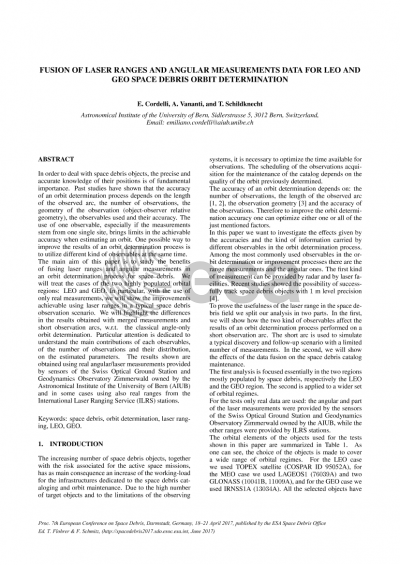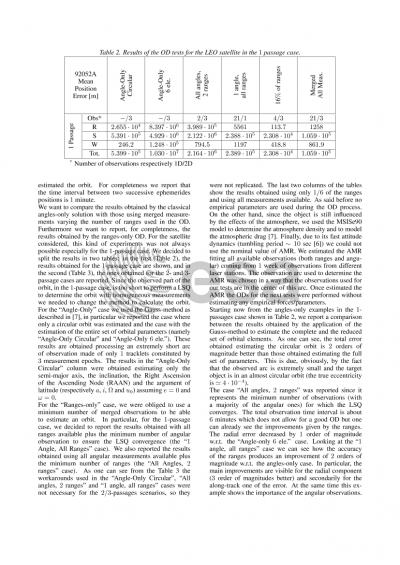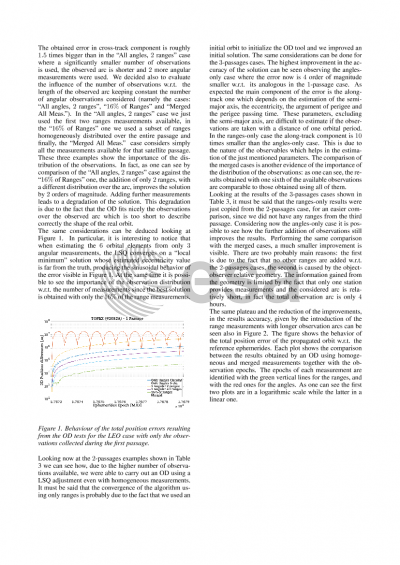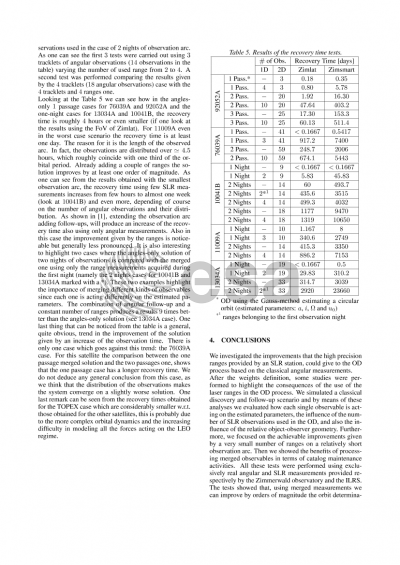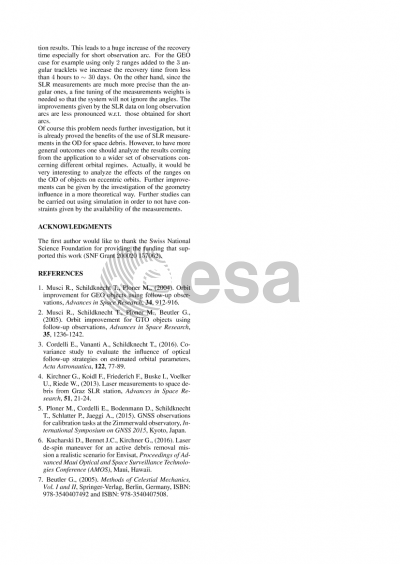Document details

Abstract
In order to deal with space debris objects, the precise and accurate knowledge of their positions is of fundamental importance. Past studies have shown that the accuracy of an orbit determination process depends on the length of the observed arc, the number of observations, the geometry of the observation (object-observer relative geometry), the observables used and their accuracy. The use of one observable, especially if the measurements stem from one single site, brings limits in the achievable accuracy when estimating an orbit. One possible way to improve the results of an orbit determination process is to utilize different kind of observables at the same time.
The main aim of this paper is to study the benefits of fusing laser ranges and angular measurements in an orbit determination process for space debris. We will treat the cases of the two highly populated orbital regions: LEO and GEO. In particular, with the use of only real measurements, we will show the improvements achievable using laser ranges in a typical space debris observation scenario. We will highlight the differences in the results obtained with merged measurements and short observation arcs, w.r.t. the classical angle-only orbit determination. Particular attention is dedicated to understand the main contributions of each observables, of the number of observations and their distribution, on the estimated parameters. The results shown are obtained using real angular/laser measurements provided by sensors of the Swiss Optical Ground Station and Geodynamics Observatory Zimmerwald owned by the Astronomical Institute of the University of Bern (AIUB) and in some cases using also real ranges from the International Laser Ranging Service (ILRS) stations.
Preview
